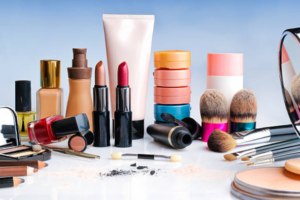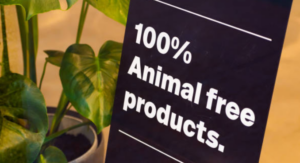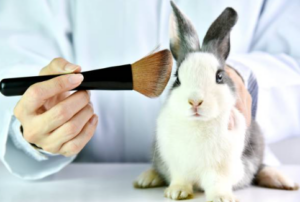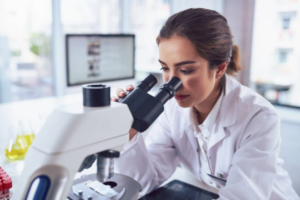Progress and Setbacks in the Beauty Industry

The beauty industry has long been associated with the pursuit of aesthetics and self-care, but its practices have also been under scrutiny for their impact on animals. Over the past few decades, an ethical revolution has been taking place, with a growing number of countries and companies recognizing the importance of eliminating animal testing for cosmetics. This global shift is a testament to the power of consumer demand and the collective pursuit of a cruelty-free world. In this comprehensive blog, we’ll explore the progress and setbacks of animal testing bans in the beauty industry, highlighting the journey towards a more compassionate and sustainable future.
Animal testing has long been a controversial and ethically fraught aspect of the beauty industry. The practice involves subjecting animals, often rabbits, mice, guinea pigs, and even larger animals like dogs and monkeys, to a variety of cosmetic and personal care product tests. These tests aim to assess the safety and potential side effects of these products on human consumers. However, the methods used in animal testing often cause significant pain, distress, and suffering to these animals, raising serious ethical concerns.
- Skin and Eye Irritation Tests: One common type of animal test involves applying substances directly to animals’ skin or eyes to determine their potential for causing irritation or allergic reactions. Animals may experience redness, swelling, and discomfort during these tests.
- Lethal Dose (LD) Tests: LD tests are conducted to determine the amount of a substance required to cause death in animals. This test helps establish a substance’s toxicity level but usually results in the death of the animals involved.
- Draize Test: This notorious test involves applying cosmetics, such as mascara or eyeliner, to animals’ eyes to assess potential eye irritation. The test can cause extreme discomfort, corneal damage, and even blindness in some cases.
- Oral Toxicity Tests: Animals are forced to ingest substances to assess their toxicity. This can lead to severe side effects and even death in some cases.
- Inhalation Tests: Animals are exposed to aerosolized substances to determine the effects of inhaling these products. This can lead to respiratory distress and other health issues for the animals.
The ethical concerns surrounding these practices have sparked significant public outrage, leading to widespread protests and campaigns advocating for cruelty-free alternatives. Activists argue that subjecting animals to such pain and suffering for the sake of human beauty is both morally indefensible and unnecessary given the advancements in alternative testing methods.
Progressive Steps Towards Bans
The journey towards eliminating animal testing in the beauty industry has been marked by significant milestones and global cooperation. Several countries and regions have taken pioneering steps to ban or restrict animal testing for cosmetics, demonstrating their commitment to ethical practices and animal welfare. Let’s delve deeper into some of these milestones:
- European Union (EU) Ban: The European Union has been at the forefront of the cruelty-free movement. In 2013, the EU implemented a full ban on animal testing for cosmetics. This ban not only prohibited animal testing within the EU but also banned the sale of cosmetics containing ingredients tested on animals anywhere in the world. This comprehensive approach set a precedent for other regions to follow and spurred global discussions on the necessity of animal testing in the beauty industry.
- India’s Import Ban: In 2013, India took a significant step by banning the import of cosmetics tested on animals. This move showcased India’s commitment to ethical practices and animal welfare, prompting numerous beauty brands to reconsider their testing methods if they wanted to access the Indian market.
- Brazil’s Progressive Legislation: In 2014, Brazil passed a comprehensive legislation that banned both animal testing for cosmetics and the sale of cosmetics tested on animals. This groundbreaking legislation solidified Brazil’s stance as a leader in animal welfare and inspired other countries in Latin America to consider similar measures.
- New Zealand’s Commitment: In 2015, New Zealand added its voice to the movement by implementing a complete ban on animal testing for cosmetics. This ban underscored New Zealand’s dedication to ethical practices and sent a powerful message to the global beauty industry.
- China’s Transition: China, known for its massive beauty market, has also shown signs of progress. Historically, animal testing was mandatory for cosmetics sold in China, which posed a significant challenge for cruelty-free brands. However, in 2020, China announced that it would accept non-animal testing methods for certain cosmetics, marking a notable shift towards more compassionate regulations and opening doors for cruelty-free brands to enter the Chinese market.
- Global Ripple Effect: The bans and restrictions implemented by these regions have created a ripple effect, influencing other countries to reevaluate their stance on animal testing. Countries like Canada, Australia, and several others have introduced bills and regulations to phase out or restrict animal testing for cosmetics.
- International Collaborations: Various international collaborations and initiatives have played a vital role in spreading awareness and driving change. The “Be Cruelty-Free” campaign, led by organizations like the Humane Society International and the Cruelty Free International, has been instrumental in advocating for animal testing bans on a global scale.
While these progressive steps are commendable, challenges remain. Loopholes in some bans, varying regulatory standards across countries, and the need for harmonized testing methods are factors that must be addressed for a truly cruelty-free beauty industry.

Setbacks and Challenges
While the progress towards animal testing bans in the beauty industry is promising, there are several challenges and setbacks that must be acknowledged and addressed to ensure a comprehensive shift towards cruelty-free practices:
- Incomplete Bans: Some bans come with loopholes or limitations. For instance, while the EU’s ban on animal testing for cosmetics is significant, it does not cover all types of animal tests. This highlights the need for bans to be all-encompassing to truly eliminate animal testing for cosmetics.
- Regulatory Complexity: The absence of a unified global approach to animal testing creates regulatory complexity for beauty brands that operate in multiple markets. Varying regulations and standards make it challenging to ensure consistency in testing practices and product formulations.
- Global Synchronization: The lack of a harmonized global approach to animal testing bans can create disparities in the way cosmetics are tested and marketed. This can lead to confusion among consumers and brands alike, as well as potential market access barriers for cruelty-free products.
- Lobbying and Economic Concerns: Some entities argue against complete bans on animal testing, citing economic implications or the need for scientific data. Economic interests and lobbying efforts from industries invested in animal testing can slow down the progress of implementing comprehensive bans.
- Alternatives and Scientific Validation: While alternative testing methods show promise, their development and validation are complex. Ensuring that these methods are accurate, reliable, and accepted by regulatory authorities requires extensive research and collaboration between scientists, regulators, and industry experts.
- Consumer Awareness and Education: Despite growing awareness of animal testing issues, not all consumers are well-informed about the practices of the beauty industry. There is a need for continuous education to empower consumers to make informed choices and advocate for cruelty-free products.
- Market Access in China: While China has shown progress by accepting certain alternative testing methods, the country’s regulations still require animal testing for some cosmetics. Brands looking to enter the Chinese market often face a dilemma between adhering to cruelty-free values and complying with local regulations.
- Supply Chain Challenges: Ensuring that all ingredients used in cosmetics are cruelty-free can be complex due to supply chain intricacies. Brands need to work closely with suppliers to ensure that no animal testing is involved in any stage of ingredient production.
- Balancing Safety and Ethics: Striking a balance between ensuring the safety of cosmetics for human use and adhering to ethical principles presents a challenge. Brands and regulatory authorities must work together to find solutions that meet both requirements.

A Glimpse into the Future
The movement towards cruelty-free practices in the beauty industry is an evolving journey that holds the promise of a more compassionate, ethical, and innovative future. As society’s values shift towards sustainability and animal welfare, the beauty industry is responding with advancements and initiatives that pave the way for a cruelty-free landscape:
- Technological Advances: The beauty industry is increasingly embracing technological advancements to replace traditional animal testing. In vitro testing, organ-on-a-chip technology, and artificial skin models are becoming more sophisticated and accurate, offering reliable alternatives that can predict human responses to cosmetics without harming animals.
- Consumer Power: Consumers are becoming more conscious of the products they purchase and the values they support. The demand for cruelty-free products has driven beauty brands to prioritize ethical practices and transparency. As consumer awareness grows, brands are compelled to adopt cruelty-free methods or risk losing market share.
- Collaborative Initiatives: Organizations like the Humane Society International and the Leaping Bunny Program are actively working to promote cruelty-free practices. These initiatives provide resources, certifications, and information to consumers, allowing them to make informed choices about the products they use.
- Legislative Changes: As more countries and regions implement bans on animal testing, the momentum towards a cruelty-free future gains traction. International cooperation, sharing of best practices, and harmonization of regulations could accelerate the adoption of cruelty-free testing methods worldwide.
- Education and Advocacy: Public awareness campaigns, documentaries, and social media platforms have played a crucial role in educating consumers about the harsh realities of animal testing. Continued education and advocacy efforts can lead to a groundswell of support for cruelty-free practices and push brands to align with ethical values.
- Supply Chain Transparency: Brands are beginning to focus not only on their own testing practices but also on the practices of their suppliers. Ensuring a cruelty-free supply chain is becoming a priority, driving industry-wide changes.
- Ethical Innovation: The movement towards cruelty-free practices is sparking innovation in the beauty industry. Brands are investing in research to develop new ingredients and formulations that don’t require animal testing. This innovation is not only ethical but also aligns with consumer preferences for cleaner and safer beauty products.

- International Trade Dynamics: As cruelty-free regulations impact international trade, countries that continue to allow animal testing may face trade barriers or restrictions. This economic incentive could drive these countries to reevaluate their testing practices.
The journey towards eliminating animal testing in the beauty industry is a complex one, marked by both progress and setbacks. As bans are implemented and revised, the industry’s approach to product testing continues to evolve. Through the power of consumer demand, technological innovation, and collaborative efforts, the beauty industry is inching closer to a future where beauty is synonymous with compassion, sustainability, and cruelty-free practices. While challenges persist, the unwavering dedication of activists, brands, and consumers holds the promise of a more humane and beautiful world for all.

